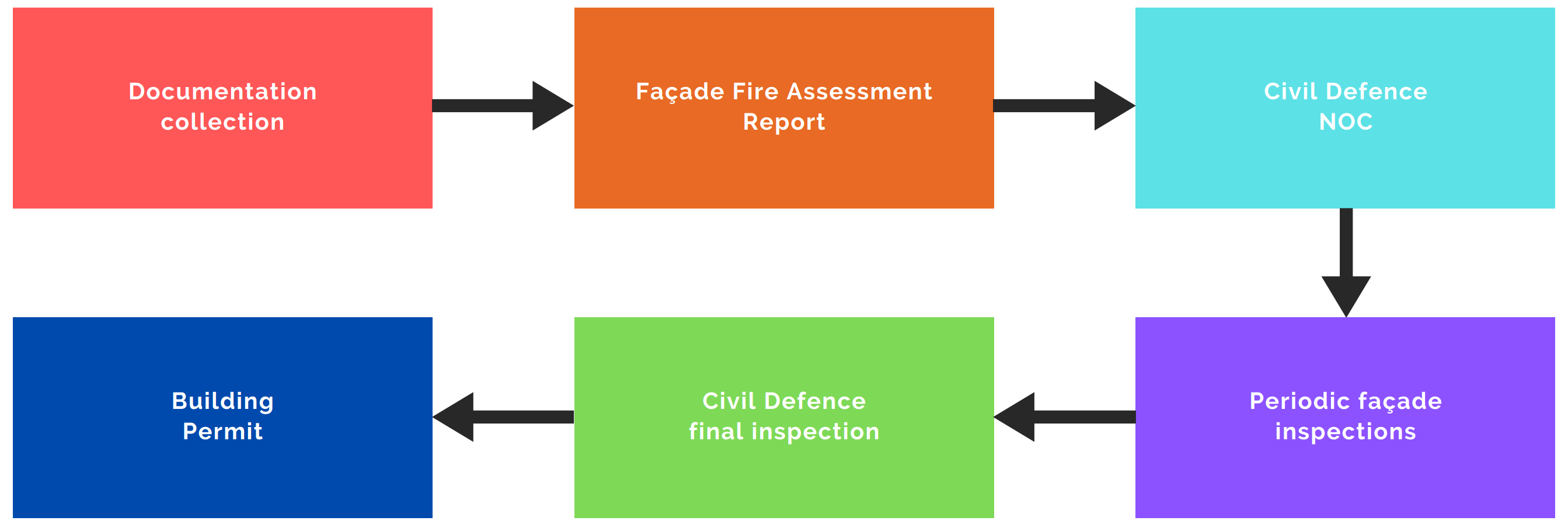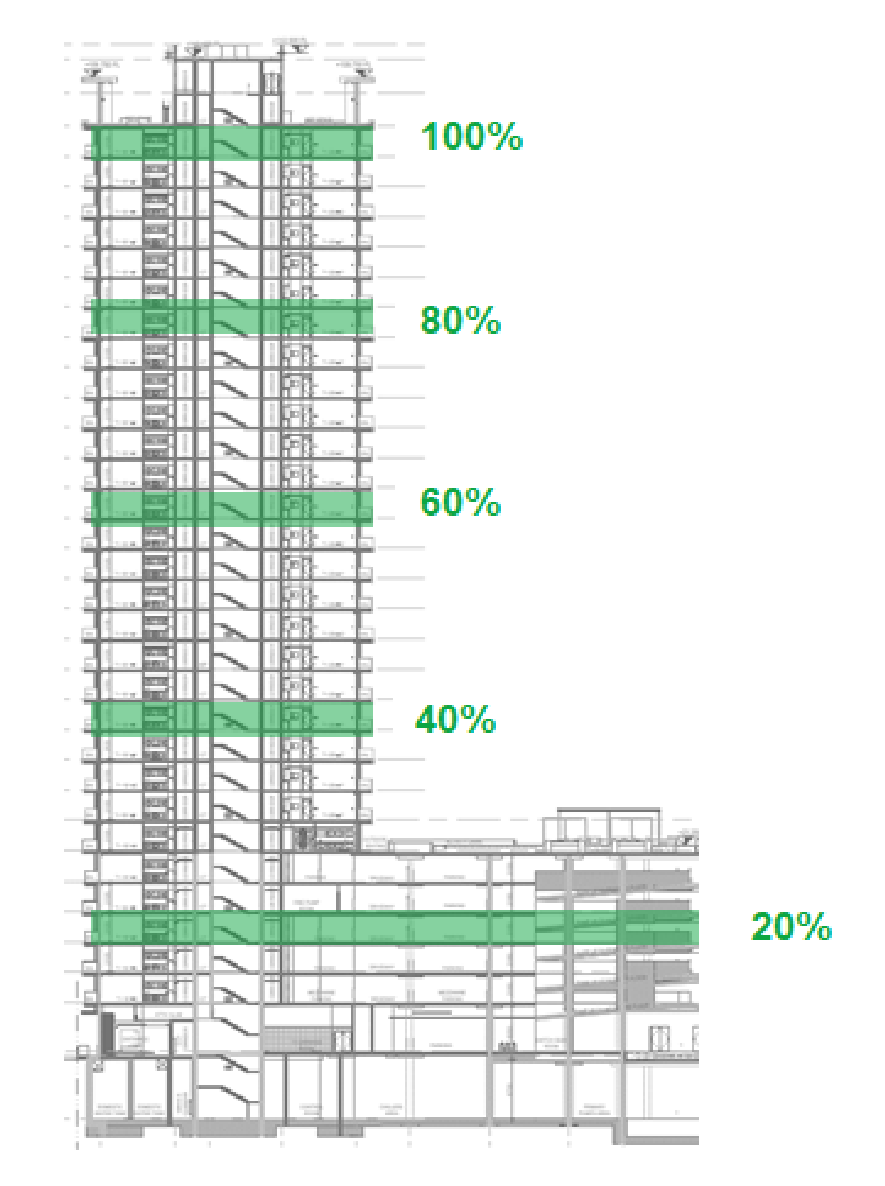Facade Assessments And Inspections
Fire and Life Safety Code of Practice – Canada
Provincial and national regulations govern the applicable building code for façade systems in Canada. They are increasingly aligned with international best practices. The guidelines are based primarily on NFPA codes, standards, and local practices.
Initially, there were limited references to façade fire performance; however, where the code was silent on any fire safety aspect, reference was typically made to relevant NFPA codes and standards.
Additional annexures were introduced between 2012 and 2014 to provide guidance and detailed requirements for façade systems. The code has since evolved to include more specific regulations for each cladding or exterior wall system type.
The current edition of the fire and life safety guidelines in Canada includes mandatory provisions for Facade Engineering Assessment Canada and Facade Inspection Canada before the installation of any cladding system.

Summary of façade fire assessment and inspection process in the Canada
Qualification and Licensing
Technical qualifications and registration are essential to verify competency and ensure that the individual or organization is qualified, licensed, and accountable for designing and installing the façade assembly.
Our firm is certified to perform building facade inspections by Canada’s Fire and Life Safety Code of Practice. The minimum requirements include:
- The cladding supplier must be registered and licensed with relevant Canadian authorities.
- The cladding system must be tested and certified by an accredited testing and certification body in Canada.
- The cladding system must comply with all national and provincial certifications.
- Facade engineers in Canada must be accredited and certified by the local authority (equivalent to a House of Expertise) to review the design and perform facade inspections.
- Façade installers must be trained, licensed, and certified by the system supplier and registered locally.
Façade Design Review
Certified professionals must submit a Facade Engineering Assessment Canada report to local authorities before on-site installation. This report outlines the complete façade assembly proposed for the project and incorporates system schematics. Some of the key components of this report include:
- Description of the building including occupancy type, height and stakeholder information.
- Elevation drawings highlight the various façade systems and their distribution across the building envelope.
- Workshop drawings and component schematics for each façade system.
- Registration certificates and Certificate of Conformity (COC) for all relevant façade components.
- Facade Testing Procedure results for individual components (tested without skin).
- Full-scale fire testing results for the entire façade assembly.
- Spandrel separation: vertical (minimum 915 mm) or horizontal (minimum 760 mm) with 1-hour fire resistance for buildings over 15 meters in height.
- Certified perimeter fire barriers at slab edges.
- Cavity fire barriers at each floor level and around window openings within the void between cladding and substrate.
Canadian codes require both small- and full-scale fire testing for different cladding systems, with acceptable standards from American, British, and European benchmarks, depending on building occupancy and height. Any deviation from a tested and certified system must be supported by an Engineering Judgement (EJ) from a recognized testing authority.

Stakeholders must submit undertaking letters confirming that the design, performance, and installation of the façade systems will align with Canada’s Fire and Life Safety Code of Practice.
Façade Field Verification
Once the Facade Engineering Assessment Canada report is approved and façade installation begins, Facade Inspection Canada procedures must be carried out at minimum intervals of 20% to verify compliance. These inspections cover the façade system and all passive fire protection elements, such as cavity fire barriers.

Minimum frequency of façade fire inspections by House of Expertise accredited to ISO 17020
Perimeter fire barriers must be inspected according to ASTM E2393—Standard Practice for On-Site Inspection of Installed Fire Resistive Joint Systems and Perimeter Fire Barriers (including one destructive test per 152 linear meters).
The inspections verify the actual site conditions against the approved
F.acade Engineering Assessment Canada report. Any deviations must be documented and may require corrective action or resubmission of documentation to the relevant Canadian authority.

Building facade inspections must be carried out by independent third-party agencies accredited to ISO 17020 – Conformity Assessment, ensuring the credibility and integrity of the inspection.


